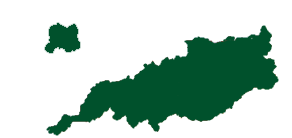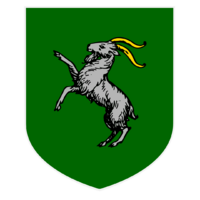Swinas
Federal Republic of Swinas Parnaas Tulapayttap bet Swiinas | |
|---|---|
 | |
| Capital | Tuppelt |
| National Language | Swiina, Common, German |
| Ethnic groups |
|
| Demonym(s) | Swiina |
| Government | Federal Republic |
• First Consul | Eduard Hoffman |
• Second Consul | Lorenzo Ricci |
| Area | |
• Total | 985,095 km2 (380,347 sq mi) |
| Population | |
• 2020 census | 42,299,153 |
| GDP (nominal) | estimate |
• Total | 448,984,350,000 |
| Currency | Swish Ram, Swish Buckling (SR, SB) |
| Driving side | right |
| Calling code | +59 |
The Federal Republic of Swinas is a Swiina speaking nation which is has its mainland on the continent of Hiraethia, but also has an island in the Talsar Sea. The nation can trace it's beginnings all the way back to around 150 BCE, but has officially been existing since 1564. The Federal Republic of Swinas shares a border with Vultesia and Wellsenfaile. The country has a dual-consular government, where two consuls are elected by the Swiina People and share the powers that the head of the executive branch would normally hold. The Federal Republic of Swinas' government also contains a Senate, which passes legislation which can be vetoed and must be signed by both consuls. Besides on a federal level, the Federal Republic also contains the provinces of Cresta, Valdeor, Maricosta, Montenova, Floriverde, and Nordinsel. Each of these 6 provinces are represented by the 6 stars on the Swiina Flag, with the star in the center representing the Federal Swiina Governent.
History
Rise of the Swiina People
TBA
The Swianese Period
TBA
The Crestan Period
Following the fall of the Realm of Swian, the Kingdom of Cresta would rise, which hailed in the modern-day Cape Cresta. The Kingdom of Cresta was founded after the "Crestan League" would decide to unite into a centralized entity in order to better protect itself from the Nordinsellian Invaders... (More will be written later.)
Government
The Government of Swinas will now be explained in full depth. The Government of Swinas is divided into 3 echelons, the first being the Consuls, the next being the Senate, and finally the Provinces. The consuls are the easiest to explain, and will be discussed first. The requirements to become a consul are that you must be at least 30 years old, you must have been a member of the senate for 5 years, and you must be born in Swinas or your parents were born in Swinas. The two consuls share the power to veto and approve legislation, but if the Senate counters the veto with a 75% majority then it is passed regardless. The two consuls must both sign legislation before it is passed.
Then there is the Senate. The Modern Senate is comprised of 100 members, but this number has changed throughout history. To be a member of the Senate you must be 20 years old. A senator has one vote each, and a simple majority of 51/100 can pass a law. If both consuls veto a law, then it can be countered by a 75/100 majority, which will override the Consul Veto and force the law to be passed. The Senate has some limitations per what laws it can pass due to the constitution, mainly that it cannot impede upon the established Bill of Laws. Laws in the Bill from the beginning of the Federal Republic cannot be easily removed, but newer ones are easier to remove.
Lastly there is the provinces. Each province has a governor who can choose to follow or not follow certain legislation passed by the Senate. In addition, the Governor acts as the speaker of the Province, as there is also a Provincial Assembly in every province which has a member count proportional to it's population. These provincial assemblies can only pass laws which involve the province they are in, however. The consuls, senate, and provinces altogether make up the Modern Government of Swinas, which has been in place for 400 years and is still stable today.

